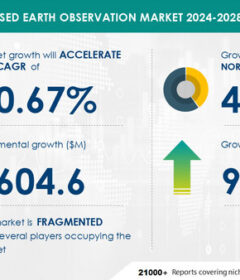How brands can operate with purpose and embrace change as businesses move to reopen

To navigate the complex new era of marketing, Sirich said brands need to put people first, focus on responsibility, and embrace inclusion.

At SMX Next last month, Steve Sirich, Microsoft’s general manager of the Global Advertising Business joined Search Engine Land editor-in-chief Ginny Marvin for a one-on-one discussion on the future of digital marketing set against a backdrop of massive disruption.
“We’ve had this pandemic that’s forced our entire industry to really shift priorities from a growth sort of position to now a survival position – and kind of reinvent, in many ways, the brand experience,” Sirich said. As an industry of “digital first responders,” Sirich explained that digital marketers are at the forefront of empowering friends, family, and business partners through these challenging times.
With businesses in the midst of reopening, Sirich offered insights and strategic considerations to help enable brands and “digital first responders” on their journey to supporting customers and operating with purpose.
What’s top of mind as companies begin to reopen?
From the economic impacts of COVID-19 to the social justice movements engulfing the nation, organizations are being forced to change. And now more than ever, businesses need to think about putting people and communities first, prioritizing customer and employee safety, and supporting customers through these historic times.
“The social justice movement is revolutionizing at scale and really impacting us, inspiring us, and asking us to continue change for every single brand that’s out there,” Sirich said. “And so, you know, as a brand, you can’t really just sit on the sidelines. There’s not an option to do this.”
Empowering marketers to embrace change
As digital first responders, Sirich said companies like Microsoft have an inherent responsibility to use its platform and resources intentionally to address systematic inequities and support social causes.
How can organizations do that? Sirich cited Microsoft as an example: “At Microsoft, we believe we have a set of company values that we need to then project out in the world and it should really reflect who we are, our strengths, and our expertise. We’ve deepened engagement into organizations that we think reflect who we are, and that we believe can bring that systematic change. Companies need to consider that. How do they unite behind this? How do they see how it maps to their values? And how through their values? Can they actually drive for a change that will be positive to what we’re experiencing today?”
In this brave new world where consumers are speaking with both their actions and their wallets, Sirich said there’s a growing urgency for brands to be embrace authenticity and act with purpose.
“We [Microsoft] felt that purpose has always been important, but we’re seeing more and more people in companies aligned to purpose rather than products, which is as a profound sort of shift as you think about it,” he added.
Three strategies for operating with purpose
Marketing with purpose is critical for staying relevant and serving the needs of customers, which is why brands need to align with people and values, Sirich said. He offered three strategies to do this:
Focus on responsibility. As brands are called to participate in the social conversation, companies need to constantly earn the trust of their customers. One of most impactful ways brands can do this is by taking responsibility. Whether that means owning up to a misstep or making organizational adjustments to reflect change for the better, corporate responsibility is key to adopting a purposeful brand approach.
Values drive value. A brand’s core values is a reflection of its purpose, and consumers in this era are positioned to catch on quickly. Marketers need to think about how their organization’s values ultimately drives purpose as a company. Sirich said brands need to consciously consider how to “support people’s values as you think about how you lead with your brand, and how you build that loyalty.”
Embrace inclusion. In today’s modern marketing, inclusivity and diversity – and the actions that drive it – is imperative for brands. For organizations, inclusivity means considering “multiple dimensions of diversity to create culturally accurate representation in your advertising,” Sirich explained. “When people feel included, what follows is trust. And as we know, trust is central to our agenda as brands today.”


